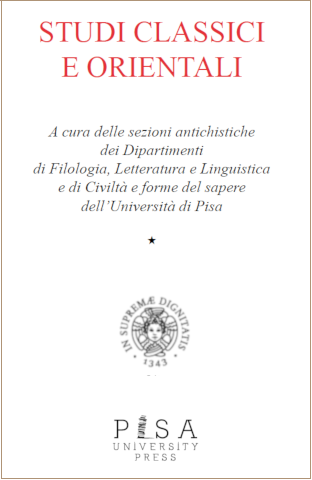La trasmissione alto-medievale di Marziale: la classe α.
Abstract
Early-medieval transmission of Martial: the class αThis paper is devoted to the manuscript tradition of Martial. In the firstpart, I shall focus on the most ancient stages of the tradition. Notably,I will focus on some elements that prove the existence of an archetypein the ‘Lachmannian’ sense, and will propose some methodological remarksof the concept of ‘archetype’ in the tradition of Martial. The coreof the article, however, is devoted to one specific branch of the tradition:the class called α, only represented by two medieval florilegia. In spiteof its high editorial value, classical scholars have studied it less carefullythan β and γ. Here for the first time I will provide a stemma codicumof this class and will analyze its textual characteristics. In the last part ofthe article, I will inquire the history of α from the antiquity (reconsideringLindsay’s theory that α derives from a late-antique edition in usumelegantiorum) to the viii century, the age of the first direct witnesses ofα. A brief survey on Martial’s reception in the early Carolingian period(especially in Theodulf of Orléans and Paul the Deacon) proves that inthe late viii century Martial was a common model for Latin versificationand a popular source of inspiration for occasional poetry. If we widen our search to non-literary texts (Paul the Deacon’s scholia on Isidore,Rabanus Maurus’ grammatical works, the prosodic florilegia), we findsolid evidence for the use of α in the Carolingian schools. Even thoughthe book listed in the catalogue of Berlin, Diez 66 cannot be identifiedwith the archetype of class α, it is highly probable that the royal court ofCharlemagne was the starting point of a flourishing tradition, partiallysurviving in the extant florilegia, partially lost and recoverable from theindirect tradition.
Fascicolo
Sezione
Articoli


